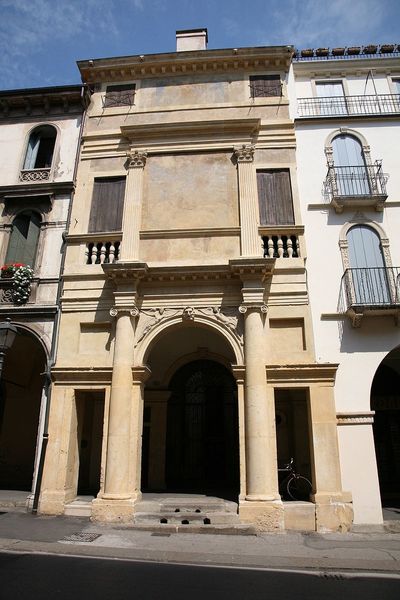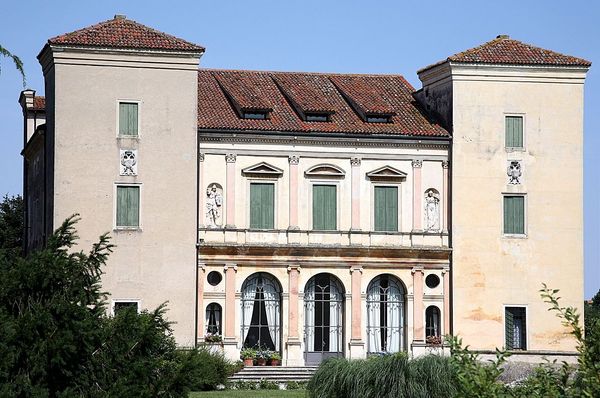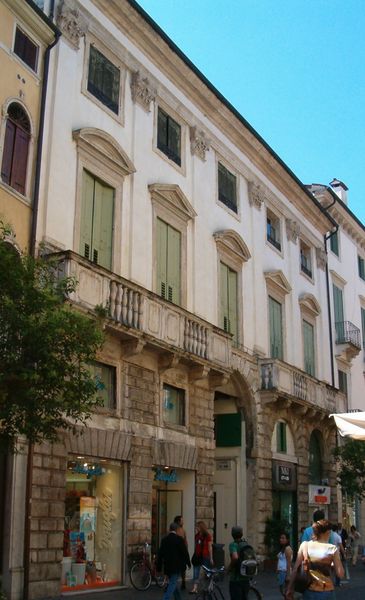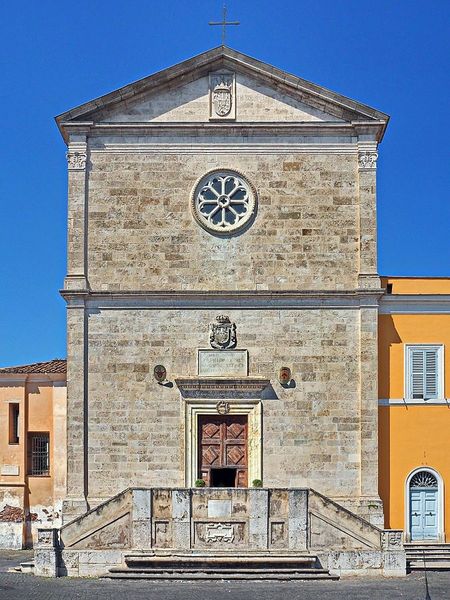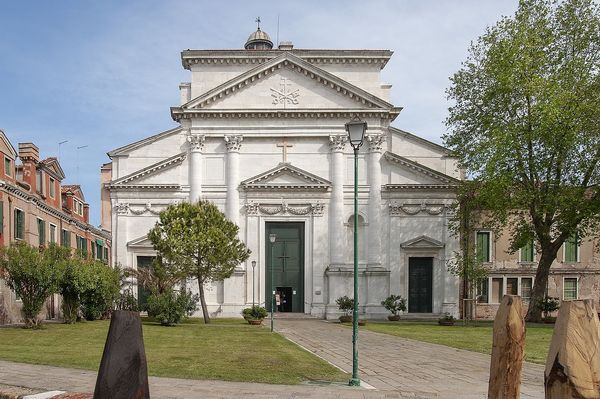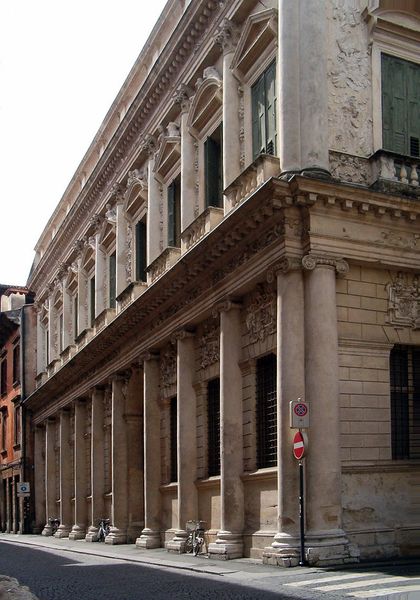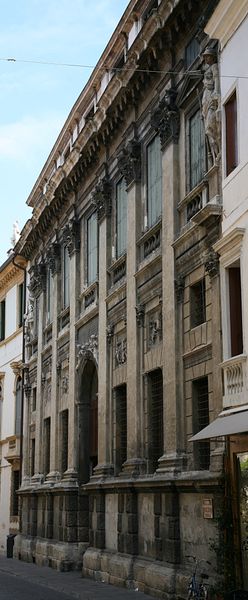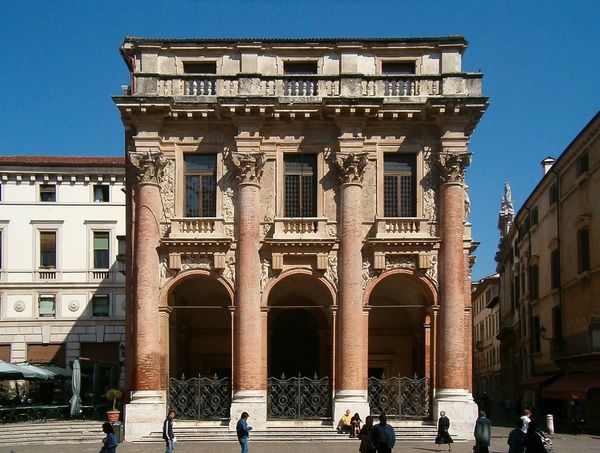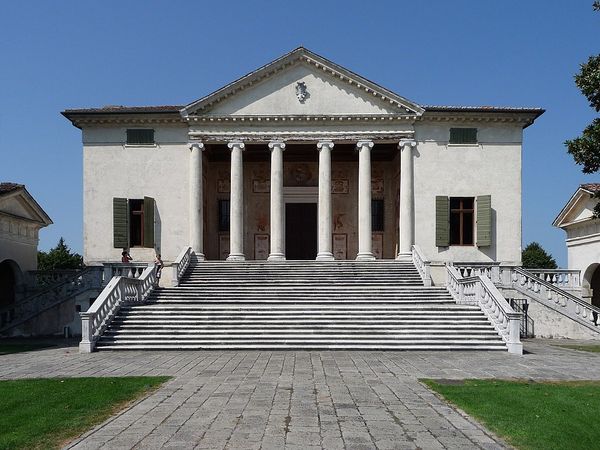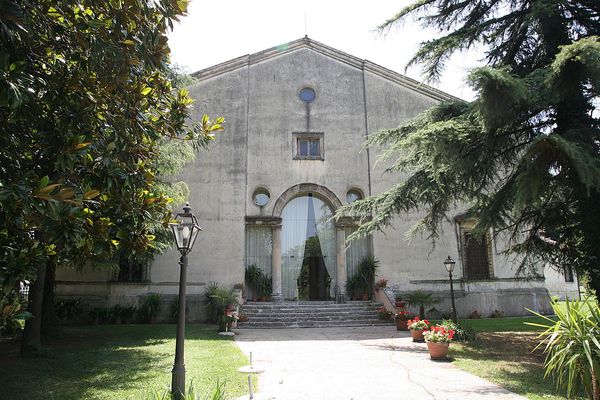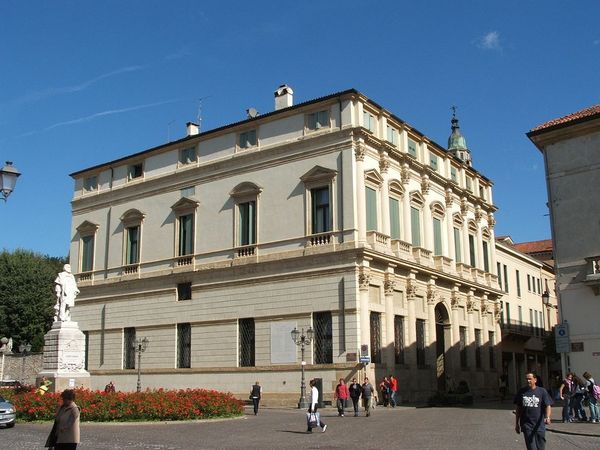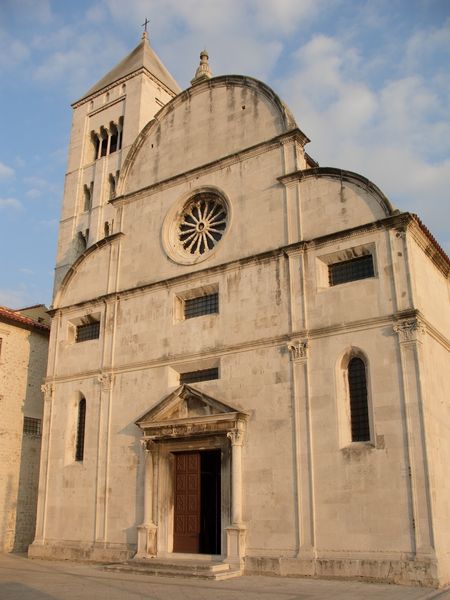
plein-air, architecture
#
plein-air
#
landscape
#
historic architecture
#
11_renaissance
#
italian-renaissance
#
architecture
Copyright: Public domain
The Palazzo Porto was designed by Andrea Palladio in Vicenza, Italy, during the Renaissance. It embodies Palladio's vision of architecture as a means to express social status and cultural values. By incorporating classical elements like columns and symmetry, Palladio drew on the architecture of ancient Greece and Rome, signaling the owner's wealth and refinement. The Palazzo reflects the cultural aspirations of the Venetian elite in the 16th century. It represents a conscious effort to revive classical ideals within the context of Renaissance society. Historical records and architectural treatises are crucial resources for understanding the Palazzo Porto. They provide insights into the social and cultural milieu in which it was conceived and built. The Palazzo stands as a testament to the enduring influence of classical architecture and the power of art to reflect and shape cultural identity.
Comments
No comments
Be the first to comment and join the conversation on the ultimate creative platform.
